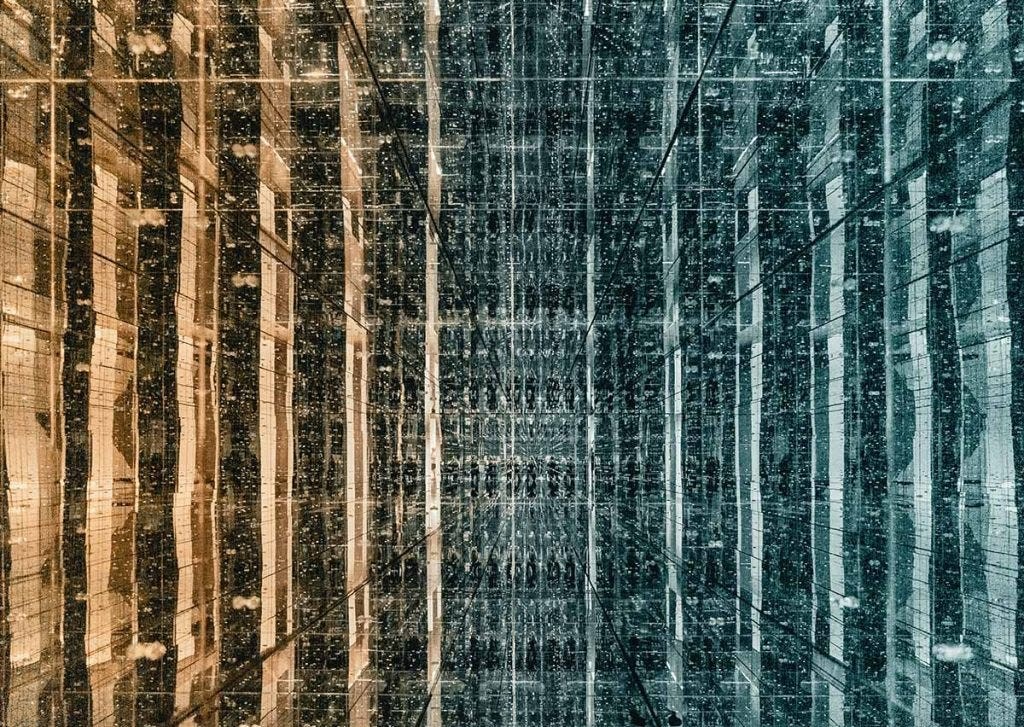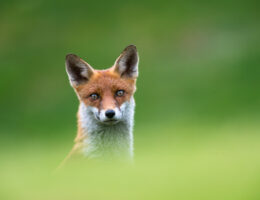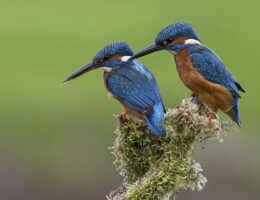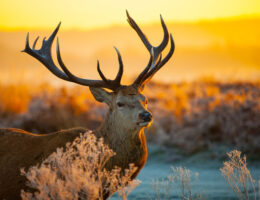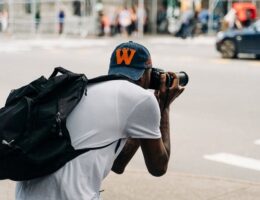IRAN ART EXHIBITION: OBSERVE THESE POINTS TO HAVE THE MOST AMAZING ABSTRACT IMAGES
Getting into abstract photography is one of the best ways that any aspiring photographer can start out in photography. Compared to more popular types of photography like product, outdoor, and wedding photography, abstract photography goes against many photography rules. It gives you the freedom to take a photo of anything that grabs your attention and allows you to express your artistic nature.
What Is Abstract Photography?
Formally speaking, abstract photography is a method of expressing ideas and emotions with photographed image elements without the intention of creating a traditional or realistic image. By avoiding and going beyond the usual representations of an object, scene, or any particular element, it reveals details that are normally ignored and triggers the viewer’s imagination.
What Inspired Abstract Photography?
As abstract photography draws away from the objective image of reality, it blends in the extraordinary and unusual of concepts, mediums, and photographic techniques. The first approaches of abstract photography appeared in the 19th century as technical experiments and were focused on capturing the unseen part of the world.
But the main inspiration came from the abstract art of the beginning of the 20th century. The radical visions of Picasso, Kandinsky, Braque, and others determined the fate of abstract photography. Whether it was loved or hated, Cubist, Futurist, and Surrealist art was making a point, and avant-garde photographers wanted to be part of the movement. Jaroslav Rössler, Man Ray, André Kertész, and László Moholy-Nagy were among the first to experiment with the abstraction of light, perspective, natural world elements, and conventional imagery. Their abstract photos became part of the history of photography and inspired others to create abstract pictures too.
IRAN ART EXHIBITION: As Moholy-Nagy said, photographers “must learn to seek, not the ‘picture,’ not the esthetic of tradition, but the ideal instrument of expression, the self-sufficient vehicle for education.”
What is Abstract Composition in Photography?
Abstract composition means focusing on basic elements instead of realistic representations of the scenery in front of you. However, the result must be a visually appealing image with strong focal points, wisely chosen leading lines, and balance. While you can break some of the standard composition rules, you still have to look after the aesthetics.
Many abstract photos have a structural design and imply working with geometrical features and creative depths of field. Therefore, balancing proportions, shapes, and colors is essential.
Abstract photography requires mesmerizing compositions to capture the viewer’s attention for a longer time than realistic images. They should slowly reveal their elements and raise questions each step of the way. In abstract pictures, nothing is what it seems.
Some of the most acclaimed—and expensive—pieces of art include odd yet visually interesting photos of things that don’t seem to tell a specific story but still mystify and engage viewers on a deeper level.
Find out what makes abstract photos intriguing below.
What are the key elements of a good abstract photo?
• Simplicity
• Composition
• Angle of View
• Lighting
• Harmony
• Mystery
While abstract photography doesn’t bind one to follow strict photography rules like other niches do, there are a couple of elements that give an abstract photo more depth and increase its appeal. You’ll want to include these elements in your photos if you want to create a meaningful abstract photo that can speak volumes to your viewers.
Simplicity
IRAN ART EXHIBITION: At first glance, abstract photos may seem a little confusing and cluttered. However, once you understand what “abstraction” does, you’ll realize that a lot of subtraction actually goes into the process. Distracting and useless elements that don’t trigger emotions and may confuse viewers are eliminated from the image, especially since what is included in the image won’t be easily recognizable, thus resulting in a cleaner abstract image that is visually lighter and easier to interpret.
Composition
While many commonly observed photography composition rules don’t apply, a good abstract photo always has a clear, structural design. A lot of thought goes into the order, placement, and balance between shapes, patterns, textures, and even colors within an abstract image. These factors greatly affect the visual weight of the photo, establish and complement the point of interest, and influence how viewers look at it. A well-composed photo uses these visual elements to achieve a common goal and output.
Angle of View
Like composition, the angle of view determines how the subject will be represented in an abstract image. Choosing the right angle of view involves looking for the best vantage point that will complement your subject and keep distractions out of the frame. Aside from shooting at an unusual angle, some abstract images are even flipped or rotated during post-processing to come up with different views and orientations.
Lighting
Lighting is a major element in virtually any photography style. Depending on how it is used, it can emphasize, dramatize, or give prominence to subject forms, details, or areas within an image. The direction and power of the light source can also play a huge part in directing the presentation of the subject and setting the tone for the shot. You’ll find that many of the most mysterious and intriguing abstract images have silhouettes, backlighting, and interesting shadows.
Harmony
Photographic elements in an abstract image tend to be limited, but they usually work together by creating visual balance and proportion. When there are strong colors in an image, for example, they are usually balanced out by other muted colors. This way, they don’t fight for visual attention or confuse viewers. They co-exist harmoniously by relating to each other and complementing the focal point, thus creating a cohesive abstract photo.
Mystery
IRAN ART EXHIBITION: Abstract images trigger emotional responses and imaginations by including an element of mystery and intrigue. This is how abstract art gives viewers a sense of wonder. This, in turn engages and encourages them to appreciate even the most complex but inviting pieces of art.
Abstract Photography Tips for Beginners
1. Start with everyday objects
2. Use elements of design to your advantage
3. Go macro
4. Shoot through objects
5. Capture motion
6. Practice the art of subtraction
7. Customize your lighting
8. Experiment with different shooting styles
9. Post-process your images
Contrary to popular belief, it’s not difficult to capture abstract images. It’s just a matter of gaining a better understanding of what abstract photography really is, what makes a good abstract photo, and letting your creative juices flow. Grab your favorite camera — like the Sony a7IV, Canon EOS R5, or Nikon Z 7II — and start creating. Here are a few easy tips that can help you take your abstract photos to the next level.
1. Start with everyday objects
Abstract photography involves a lot of looking at things in a different way. It can help if you start with things that you already have at home to practice. Once you get used to seeing mundane, everyday things beyond their usual framework, you’ll be able to think and see things abstractly wherever you are.
Believe it or not, literally anything can be a subject in your abstract photos. Choose a random object or set of things, such as kitchenware or a single light bulb, and try to figure out how you can photograph it in a different yet appealing way. Step outside and look at the morning dew or building angles in your neighborhood. All of these can be sources and inspirations for abstract images.
2. Use elements of design to your advantage
The composition of different photographic elements—line, shape, form, texture, pattern, and color—can influence your viewers to appreciate and look at your photos in many different ways. Lines and curves, for example, add interest by leading your viewer’s eyes across an image, perhaps towards the focal point in the shot. Some of the principles of architecture photography apply here, as well, and you can utilize the buildings around you as inspiration for abstract photography.
IRAN ART EXHIBITION: Patterns and textures are always interesting to look at. You can blow your viewers’ minds if you include a zoomed out shot of what it really is and where it came from. Similarly, you can use colors to highlight the point of interest or just to add visual impact to your image. Seek out these elements around you and use them to create compelling abstract images.

3. Go macro
One of the most common methods of capturing abstract photos is to move in closer. You can do this either by zooming in or going macro. While it’s perfectly fine to use zoom lenses, they only make distant objects look closer up to a certain extent. To achieve a much closer focus that can magnify tiny objects or details and capture a life-sized (or even bigger) image, you’ll need to use your camera’s Macro mode or get a good macro lens.
This will allow you to get an extra close look at the often missed elements around you. Small insects, flowers, and jewelry are often subjects of macro photography, but when you bring abstract elements into the fold, you can see a whole new side of these objects.
4. Shoot through objects
Using a makeshift lens “filter” can help you achieve truly unique and abstract images. Colored filters and gels, for example, can save you from having to edit your photos just to give it an interesting color tinge. Shooting through translucent glass, water, or even a car window on a rainy day can result in distortions and light diffractions that will create unusual but visually interesting images. Don’t hesitate to experiment with other kinds of things you can shoot through. You can then find out how they can affect your image.
5. Capture motion
Many photographers frown upon subject motion blurring—but not abstract photographers. By simply moving your camera at the moment of taking the shot, you end up with a mix of different colors, lines, and patterns. This looks similar to painting brushwork, depending on the direction of movement. Start with one direction, then left to right. Experiment with circular movements and wiggles. Understand how it affects your images and see what kind of patterns you end up with.
IRAN ART EXHIBITION: Remember to use a slower shutter speed of 1/10th of a second or slower to successfully capture motion blur. If your shot ends up overexposed, you can go on Shutter Priority mode or use a lower ISO level and/or a tighter aperture.
6. Practice the art of subtraction
To keep your images simple, you need to get used to literally removing or keeping elements out of the frame. You may need to experiment and think about which ones you will remove. But it’s equally important that you remember why you’re doing it. Sometimes, simply taking out a second object from the equation can make your viewers focus on and contemplate the remaining object. Thus, you’re adding more mystery to your photo.
7. Customize your lighting
Changing the direction and adjusting the power of your light source can provide different effects that yield unique images. Focused lighting on your subject, for example, can emphasize and make it the focal point of your photo. Placing a strong light source on one side can create shadows that will accentuate textures. Even and diffused lighting lessens the drama but can make your viewers linger and really look at different parts of the image, as opposed to just one specific area. You can try backlighting and silhouetting, which partly involves placing the light source behind the subject.
These are just some of the many ways that you can manipulate your lighting to create shadows or highlights that add depth, mystery, and interest to your images.
8. Experiment with different shooting styles
A prerequisite for this step is to first understand how your camera works. Once you’ve gotten a good idea about how different camera settings can affect your output, you can manipulate your results to your own liking. Be willing to shoot out of focus, play with your depth of field, or shoot from very weird angles. You can also rotate your photos, or even change the white balance of your images. Try out methods used in product, outdoor, and even sports photography to create abstract results. This is the part where “anything goes,” and you’re encouraged to exercise your artistic freedom.
9. Post-process your images
IRAN ART EXHIBITION: Aside from exercising your freedom to manipulate your results and create your very own abstract imagery, feel free to go crazy with the post-processing. When it comes to editing abstract photos, there’s no such thing as “too much”. Abstract photographers are encouraged to digitally improve their work later on. You can do this through recoloring, cropping, reshaping, distorting, or flipping images.
